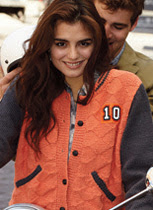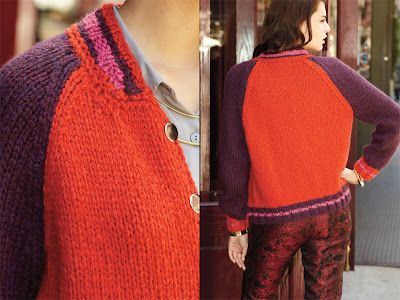Friday 21 June 2013
It's a Cat and Mouse and Knitting game
This animated short, Knitty Kitty, was made by the YouTube user castlefroggy as a student project.
Thursday 20 June 2013
Vogue Knitting Early Fall 2013: A Review
Vogue Knitting has released their Early Fall 2013 issue! Let's have a look at the patterns therein, shall we?
The first pattern is a cabled spencer. Spencers are tricky to wear — they're really only for relatively small-breasted women. And spencer wearers have to watch out for competing horizontal lines in the rest of their outfit, which chop up the figure in an unflattering way. This spencer is worn over a very simple fitted dress with just decorative tabs at the waistline, and I'm not sure that's even quite working.
Another spencer in a simpler style. This one looks like one you'd wear over very casual clothes.
Spencer no. 3. I do like it; it has a soft, pretty look, and the ruching is a nice touch. A lot of my anti-spencer attitude probably boils down to the fact that, unless I resort to major surgery, I will never, ever be able to wear one myself.
Very pretty lacy sweater with surprise back detailing. I was about to say something pouty about how I can't wear this because of the cropped length, and then I realized that this style can be made quite wearable for most women by simply lengthening it a few inches. You may also want to shape it a little so it doesn't look too boxy.
A spencer... hoodie. If you'd told me there was going to be a hooded spencer in this issue, I would have rolled my eyes, but I actually like this. That great back spiral cable detail is irresistible. Again, if you like this but you can't wear spencers, you can lengthen it.
Now a shawl-collared spencer. Vogue Knitting seems determined to boldly take the spencer where no knitting magazine has taken it before, and I have to admit I'm somewhat grudgingly going along for the ride. This is really quite nice, with very well-proportioned sleeves and collar and beautiful stitchwork, and it's perfectly styled. It really would look great on a woman who can wear spencers.
Very pretty lacy dress. You will need to wear something under this, as I see the model has done. That waistband won't work on every figure, and ordinarily I might tell you to just leave it out, but it looks like that might prove somewhat difficult and it would be a pity to spoil the excellent lines of this design.
Cute little cardigan with a few piquant touches. If you don't feel the cropped sleeve length and top button style works on your figure, the sleeves can be lengthened and buttons added without spoiling the look.
Hmm. I'm not sure about this one. I think it's meant to mimic a peasant-blouse style, which is an interesting concept, but the blousy shape and those tucked sleeves aren't going to be an easy look to pull off because they'll add visual bulk. And if you alter those things, this design will look like any other sweater. All I can say is, think carefully about whether you (or whomever you're knitting this for) will really be happy with how this looks when done.
Good call to make the lace batwing sleeves on this design transparent, because it keeps the look much more flattering than it otherwise have been. I'm not crazy about this design, but that's probably because I got maxed out on batwing sweaters in the 80s. If you like the look, this is probably as good a pattern as any.
Wow, this one is really something different. And I actually like it, though I will say I wouldn't use a vareigated yarn for the cables and hem. It's just too distracting and clunky looking amid all that delicate lace.
This designer was trying to make a sweater out of these floral hexagon patterns without using any incomplete hexagons... and wound up with a wide, cropped sweater. Unfortunately, "wide and cropped" are to clothing design what "low and slow" is to airplane flight, which is to say they are combinations to be avoided because you won't like the almost certain consequences. The floral hexagon is a really pretty building block for design, but if you don't want to shape them... use them for an afghan.
A cardigan with free-hanging lace panels. It's an interesting concept, but I think it was perhaps taken further than was advisable from a practical or aesthetic concept. I know perfectly well that if I were to wear this look, those scarves hanging from the front would drive me stark raving mad within a day, not to mention wind up in my lunch, if it hadn't already gotten into my breakfast. If I were making this look, I'd dial it back a little. I'd inset the lace panels in the front rather than have them free hanging, or possibly leave them off altogether. The back lace panel and the sleeve lace overlay could stay.
This is a nice little design. It'll be wearable for most women, and can be worn anywhere.
Stunning design. I love the single chains of stitches running the length of the design. It really adds definition and visual interest.
This lace cowl doesn't have any striking features like the last one, but it's still very pretty.
Erm. Um. Trying to come up with a reasoned critique here, but honestly, this one is just silly. Tacking lace ends randomly onto some sort of interesting ethnic art-inspired design does neither design element any favours.
This is pretty, a practical way to keep your scarf in place, and a nice solution for how to wear brooches when you don't want little brooch holes in your clothes, but I'm not sure I would plop that expanse of stockinette stitch into this lacy scarf. If I were to knit this scarf, I think I might do it all in lace, while keeping the slot to pass the other end through.
A delicately pretty cowl.
I can't say I care for this one. It's really too unsophisticated for a grown woman, although it might look quite charming on a little girl or a teenaged girl.
I was going to make fun of these two designs because they aren't something I would ever wear, but then I realized that if either of them had a swan on it rather than a tiger or a wolf, I'd be all over it. I think the appeal of such animal sweaters lies in how much you like the particular animal depicted. If the tiger or the wolf is your totem animal (half the people I know have an animal they think is cool or cute or relatable enough that they collect decorative versions of it), you might want very much to make one of these. They are good designs — the lines are good and the animal portraits are extremely well rendered.
This one has good lines and a considerable amount of thought and care has gone into its design, but I don't quite know where one would wear it. It seems like an off-beat Christmas sweater, or I suppose it might be the kind of thing you can wear while weekending at a hunting lodge. It's a little too novelty item-ish to wear to many other places.
This sweater is quite cute. The little fox is playful without being too overwhelming.
I would so tweak this cat sweater until the cat on it looked like Grumpy Cat.
I mean, if you're going to wear a cat sweater, it really ought to be a Grumpy Cat sweater. And you can save it to wear on those days at the office.
I am not clear what the animal on this sweater is supposed to be. I think it's a dog. Correct me if I'm wrong, please. I can't say I care for this one. It just looks crude and unappealing.
This is the same pattern done in three different colour schemes. It's a fine illustration of how the selection of colours and placement of simple stripes and colour blocks can radically change a sweater's appearance. If you want to try your hand at some basic design, you might begin with this project. The sweater has a good shape, and you can play with the colours and do something with them that's perfectly you.
A knitted varsity jacket. Well, it's as well-rendered as a knitted version of a varsity jacket could be. I think I'm unenthusiastic about it because I know I'm beyond the age of being able to wear anything so collegiate.
A striped cropped jacket. This, like the varsity jacket, is a very young look.
Another varsity-style knitted jacket. I think I preferred the first one better. It looks as though it'll hold its shape better, and the "V" on this one looks rather roughly done.
This one's the best of these varsity style jackets; it evokes the sporty, casual, youthful feel of one without actually trying to be a too literal version of one, and a woman over 25 can wear it without looking as though she's trying to relive the day she got to second base with the captain of the school's baseball team behind the gym at lunch.
The first pattern is a cabled spencer. Spencers are tricky to wear — they're really only for relatively small-breasted women. And spencer wearers have to watch out for competing horizontal lines in the rest of their outfit, which chop up the figure in an unflattering way. This spencer is worn over a very simple fitted dress with just decorative tabs at the waistline, and I'm not sure that's even quite working.
Another spencer in a simpler style. This one looks like one you'd wear over very casual clothes.
Spencer no. 3. I do like it; it has a soft, pretty look, and the ruching is a nice touch. A lot of my anti-spencer attitude probably boils down to the fact that, unless I resort to major surgery, I will never, ever be able to wear one myself.
Very pretty lacy sweater with surprise back detailing. I was about to say something pouty about how I can't wear this because of the cropped length, and then I realized that this style can be made quite wearable for most women by simply lengthening it a few inches. You may also want to shape it a little so it doesn't look too boxy.
A spencer... hoodie. If you'd told me there was going to be a hooded spencer in this issue, I would have rolled my eyes, but I actually like this. That great back spiral cable detail is irresistible. Again, if you like this but you can't wear spencers, you can lengthen it.
Now a shawl-collared spencer. Vogue Knitting seems determined to boldly take the spencer where no knitting magazine has taken it before, and I have to admit I'm somewhat grudgingly going along for the ride. This is really quite nice, with very well-proportioned sleeves and collar and beautiful stitchwork, and it's perfectly styled. It really would look great on a woman who can wear spencers.
Very pretty lacy dress. You will need to wear something under this, as I see the model has done. That waistband won't work on every figure, and ordinarily I might tell you to just leave it out, but it looks like that might prove somewhat difficult and it would be a pity to spoil the excellent lines of this design.
Cute little cardigan with a few piquant touches. If you don't feel the cropped sleeve length and top button style works on your figure, the sleeves can be lengthened and buttons added without spoiling the look.
Hmm. I'm not sure about this one. I think it's meant to mimic a peasant-blouse style, which is an interesting concept, but the blousy shape and those tucked sleeves aren't going to be an easy look to pull off because they'll add visual bulk. And if you alter those things, this design will look like any other sweater. All I can say is, think carefully about whether you (or whomever you're knitting this for) will really be happy with how this looks when done.
Good call to make the lace batwing sleeves on this design transparent, because it keeps the look much more flattering than it otherwise have been. I'm not crazy about this design, but that's probably because I got maxed out on batwing sweaters in the 80s. If you like the look, this is probably as good a pattern as any.
Wow, this one is really something different. And I actually like it, though I will say I wouldn't use a vareigated yarn for the cables and hem. It's just too distracting and clunky looking amid all that delicate lace.
This designer was trying to make a sweater out of these floral hexagon patterns without using any incomplete hexagons... and wound up with a wide, cropped sweater. Unfortunately, "wide and cropped" are to clothing design what "low and slow" is to airplane flight, which is to say they are combinations to be avoided because you won't like the almost certain consequences. The floral hexagon is a really pretty building block for design, but if you don't want to shape them... use them for an afghan.
A cardigan with free-hanging lace panels. It's an interesting concept, but I think it was perhaps taken further than was advisable from a practical or aesthetic concept. I know perfectly well that if I were to wear this look, those scarves hanging from the front would drive me stark raving mad within a day, not to mention wind up in my lunch, if it hadn't already gotten into my breakfast. If I were making this look, I'd dial it back a little. I'd inset the lace panels in the front rather than have them free hanging, or possibly leave them off altogether. The back lace panel and the sleeve lace overlay could stay.
This is a nice little design. It'll be wearable for most women, and can be worn anywhere.
Stunning design. I love the single chains of stitches running the length of the design. It really adds definition and visual interest.
This lace cowl doesn't have any striking features like the last one, but it's still very pretty.
Erm. Um. Trying to come up with a reasoned critique here, but honestly, this one is just silly. Tacking lace ends randomly onto some sort of interesting ethnic art-inspired design does neither design element any favours.
This is pretty, a practical way to keep your scarf in place, and a nice solution for how to wear brooches when you don't want little brooch holes in your clothes, but I'm not sure I would plop that expanse of stockinette stitch into this lacy scarf. If I were to knit this scarf, I think I might do it all in lace, while keeping the slot to pass the other end through.
A delicately pretty cowl.
I can't say I care for this one. It's really too unsophisticated for a grown woman, although it might look quite charming on a little girl or a teenaged girl.
I was going to make fun of these two designs because they aren't something I would ever wear, but then I realized that if either of them had a swan on it rather than a tiger or a wolf, I'd be all over it. I think the appeal of such animal sweaters lies in how much you like the particular animal depicted. If the tiger or the wolf is your totem animal (half the people I know have an animal they think is cool or cute or relatable enough that they collect decorative versions of it), you might want very much to make one of these. They are good designs — the lines are good and the animal portraits are extremely well rendered.
This one has good lines and a considerable amount of thought and care has gone into its design, but I don't quite know where one would wear it. It seems like an off-beat Christmas sweater, or I suppose it might be the kind of thing you can wear while weekending at a hunting lodge. It's a little too novelty item-ish to wear to many other places.
This sweater is quite cute. The little fox is playful without being too overwhelming.
I would so tweak this cat sweater until the cat on it looked like Grumpy Cat.
I mean, if you're going to wear a cat sweater, it really ought to be a Grumpy Cat sweater. And you can save it to wear on those days at the office.
I am not clear what the animal on this sweater is supposed to be. I think it's a dog. Correct me if I'm wrong, please. I can't say I care for this one. It just looks crude and unappealing.
This is the same pattern done in three different colour schemes. It's a fine illustration of how the selection of colours and placement of simple stripes and colour blocks can radically change a sweater's appearance. If you want to try your hand at some basic design, you might begin with this project. The sweater has a good shape, and you can play with the colours and do something with them that's perfectly you.
A knitted varsity jacket. Well, it's as well-rendered as a knitted version of a varsity jacket could be. I think I'm unenthusiastic about it because I know I'm beyond the age of being able to wear anything so collegiate.
A striped cropped jacket. This, like the varsity jacket, is a very young look.
Another varsity-style knitted jacket. I think I preferred the first one better. It looks as though it'll hold its shape better, and the "V" on this one looks rather roughly done.
This one's the best of these varsity style jackets; it evokes the sporty, casual, youthful feel of one without actually trying to be a too literal version of one, and a woman over 25 can wear it without looking as though she's trying to relive the day she got to second base with the captain of the school's baseball team behind the gym at lunch.
Wednesday 19 June 2013
Sophie Madeleine's "The Knitting Song"
Here's a catchy, wistful and knitting-themed ballad called "The Knitting Song" performed by English ukelele-player and singer Sophie Madeleine that I think you might enjoy.
Tuesday 18 June 2013
Petticoats and Ribboned Slippers: a Selection of Knitting Patterns from 1900-1909
When I wrote a post on Mad Men-inspired knitting projects back in May, my original intent was to proceed to write similar posts about my two of my other favourite period dramas: Boardwalk Empire and Downton Abbey. But when I began to research those posts the results proved so discouraging that I soon gave up the effort. There just aren't that many knitted items in Boardwalk Empire that anyone would even want to copy. Aside from a few sweaters that Margaret Schroeder Thompson wears, it's mostly very drab menswear. There are some supposedly Downton Abbey projects out there, but honestly, despite the designers' claims that they are "Downton Abbey-inspired", they're mostly quite contemporary-looking items that bear no resemblance to anything any of the characters have actually worn on the show.
However, that research wasn't entirely fruitless, because during the course of it I did get inspired with a concept for a series of posts that I'm very much looking forward to researching and writing and that I hope you'll all enjoy. I'm going to do a series of ten posts, each of which will feature a selection of ten authentic (or at least accurately rewritten) patterns from each decade of the twentieth century. This post is the first in the Twentieth Century Series and covers the years from 1900 to 1909 (yeah, yeah I know there was no "zero year" and it should be 1901 to 1910, but whatever, get over it).
I'm predicting this post will prove the hardest to write of the ten. My criteria for selecting these historical knitting patterns is that a) the patterns must date from the decade I'm writing about, b) the patterns must be readily accessible to my readers, and c) the patterns must be attractive and usable and at least somewhat distinctive by modern standards. As it happens, authentic and accessible Edwardian knitting patterns are pretty thin on the ground, or at least on the net. I could find only a few web sources, and some of those were mislabelled as being from 1900 when they were really from, say, the 1920s. For that matter sometimes patterns were labelled as Victorian patterns when they were actually Edwardian. (A number of antique pattern web curators don't seem to understand that the Victorian era ended in 1901 with the death of Queen Victoria.) There are a number of genuine Edwardian knitting pamphlets available on eBay, but I don't consider those readily procurable for my readers as they are are always in very limited supply and I can't count on any specific item still being listed in even a month's time, although individuals who are interested in authentic Edwardian patterns may have some success with shopping on eBay.
Then, many of the Edwardian patterns that do exist are unwearable or useless for today's knitters — I mean, I'm assuming you don't want leading reins for your toddlers or a frilly bonnet for yourself. There are quite a number of patterns available for plain and practical items, but I don't see why any contemporary knitter would want to struggle with the vagaries of an antique pattern only to wind up with a very basic pair of ribbed socks or gloves that are indistinguishable from something that could be made with a run-of-the-mill modern pattern. And there were some unforeseen difficulties. I had hoped to find some sharp knitted waistcoat patterns for men since those could perfectly well be worn by today's men, but it seems the common practice for knitters of men's waistcoats in Edwardian times was to knit only a patterned square and then to take the piece to a tailor to be made up into a waistcoat.
However, now that my excuses are made, here are my best findings, which I hope you at least find interesting to look at. The posts will get better as I go through the 20th century, because there will be a much better selection of patterns available. At least until I get to the 1980's, when everything was ugly.
This is a "Baby's Openwork Jacket", which can be found at page 28 (on the sidebar; actual booklet page number 23) in The Book of "Hows": or what may be done with wools in every home, published in 1900 and "edited by Miss Loch, needlework examiner to the London School Board" (which, by the way, sounds like an awesome job for a woman to have in 1900). The Book of "Hows" is a part of the Richard Rutt Collection, and may be viewed and printed off for free. I've written about the Richard Rutt Collection before. This baby's jacket looks pretty standard by today's terms. Baby clothing can have a very antique look without it looking odd, because things like cape collar dresses and lace jackets with ribbons never really went out of style for babies.
This is the "Oxford Puzzle Jacket or Hug-Me-Tight", which can be found on page 26 of The Second Book of "Hows", also published in 1900 and edited again by Miss Loch, and which is also available for free in the Richard Rutt Collection. I thought this design was very similar to the spencer jackets that are in again now. They're not the easiest thing to wear, but can work on a small-breasted woman and over a empire-waisted dress.
"Lady's slippers", found on page 38 of The Second Book of "Hows", published in 1900. It seems to have been very typical of slipper styles of the era to have ribbons run in around the top of one's slippers. It's a pretty look and it makes it possible to tighten the slippers to a snug fit.
This is a child's knitted petticoat pattern, which appeared in John Paton Son & Co.'s Knitting and Crocheting Book, 3rd edition, published in 1903. You can't buy this pattern by itself but will need to purchase the whole 286-page book from for $21.95 from Iva Rose Vintage Reproductions (obviously you get a lot of other patterns in the book for that price — you can view them all at the link provided). In Edwardian times this was a petticoat, but now of course it would be a little girl's knitted dress. I love the beautifully textured stitchwork, and can imagine in it a gorgeous hand-dyed wool. I'm tempted to make this one for my little grand-niece.
Child's cape-collared coat, which, like the petticoat/dress above, appears in John Paton Son & Co.'s Knitting and Crocheting Book, 3rd edition, published in 1903 and available from Iva Rose Vintage Reproductions for $21.95. I love the quaint look of this jacket, though it would only be worth making for some little princess who tends to dress up a lot!
This pattern is for a woman's petticoat, and it appeared in The Columbia Book of the Use of Yarns, Fifth Edition, which was published in 1904 and is available from Iva Rose Vintage Reproductions for $21.95. Some of the best and most usable Edwardian patterns are for what was then considered underwear. Edwardian petticoats and chemises make pretty contemporary skirts and tops (and can make a woman feel pleasantly risqué). In making this one I'd alter the top of the skirt a little to make sure there was no bulky gathering at the waist, but the texture and the scalloped hem will need no tweaking to look lovely.
This baby jacket appeared in The Columbia Book of the Use of Yarns, Fifth Edition, which was published in 1904 and is available from Iva Rose Vintage Reproductions for $21.95. It's a cute jacket but I suspect the pom-poms may be considered a choking hazard in an our era of significantly lowered infant mortality.
This feather-stitch flounce petticoat appeared in Weldon's Practical Knitter, No. 253, Vol. 22, published in 1906. The book is $9.95 on the Iva Rose Vintage Reproductions site, but in this case you also have the option of purchasing just this one pattern for $4.95. This is another petticoat that would make a beautiful skirt. In this case I'd think one would have to do a little more reshaping to make sure the skirt fit well around the waist and hips and the lower pleated part of the skirt wasn't too full.
A baby's silk knitted vest, appearing at page 110 of Pearsall's Illustrated Handbook for Knitting in Silks, published in 1906, also from the Richard Rutt Collection. Again, this is underwear that qualifies as modern outerwear. I love the detail and can picture it on a baby girl with a pretty skirt. Alternatively, if it were made longer and shaped to flare somewhat at the bottom, it could be a pretty cotton dress for summer.
Silk bag purse with snap, appearing at page 199 of Pearsall's Illustrated Handbook for Knitting in Silks, published in 1906, and also from the Richard Rutt Collection. This would need no tweaking or repurposing to be usable in exactly the same way as an Edwardian woman would have used it: as an evening bag. Though the contents would be different: a cellphone and lipstick rather than smelling salts and a point lace handkerchief.
Look for the next post in the Twentieth Century Series within the next two weeks or so. Next time, of course, we'll be covering the tail end of the Edwardian era and the First World War years.
Subscribe to:
Posts (Atom)











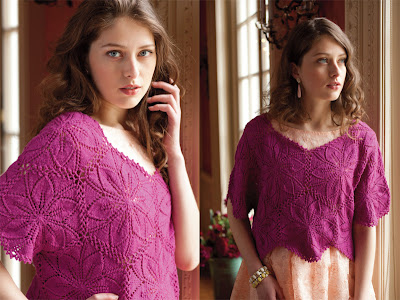




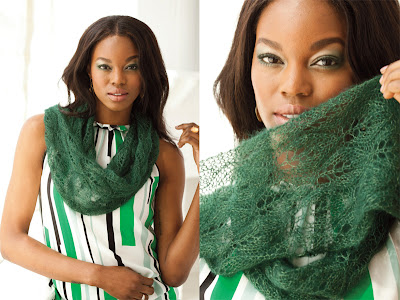





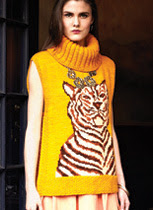





.jpg)
.jpg)








